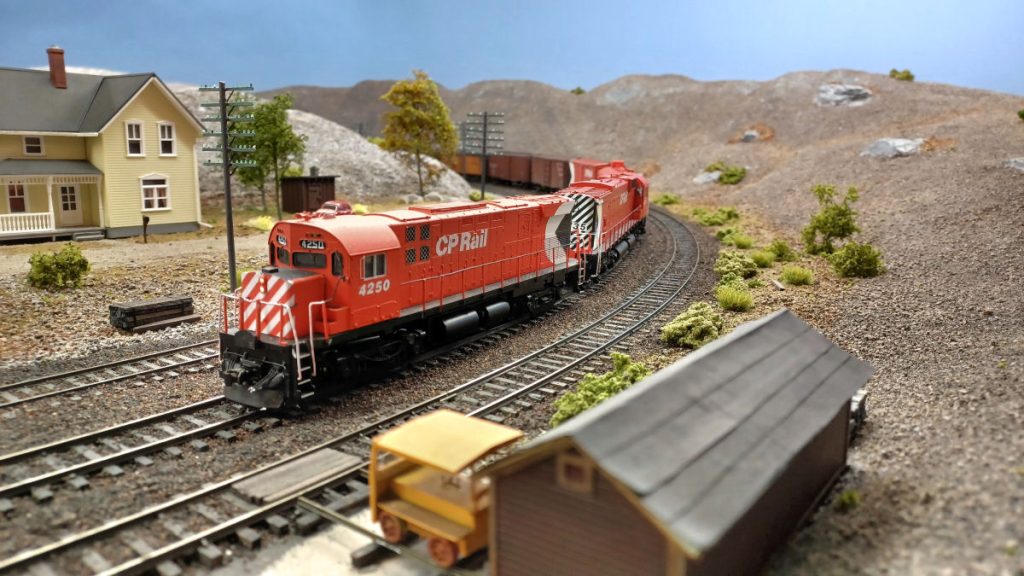14. ENGINE WHISTLE SIGNALS
NOTE: Engine whistle signals must be sounded as prescribed by this rule. The signals are illustrated by “o” for short sounds, and “__” for longer sounds. Each sound of the whistle should be distinct, with intesity and duration proportionate to the distance signal is to be conveyed.
Should the whistle fail while en route, train may proceed, running carefully and ringing engine bell continuously when approaching and passing stations , through yards, over public crossings at grade and around curves. Train dispatcher must be advised of failure from first open train order office and he will, when possible, notify other trains concerned.
| Sound | Indication |
|---|---|
| (a) o | Apply brakes. Stop. |
| (b) __ __ | Release brakes. Proceed. |
| (c) __ o o o | Flagman protect rear of train. |
| (d) __ __ __ __ | (SINGLE OR TWO TRACKS) Flagman may return from West or South.*(MORE THAN TWO TRACKS) Flagman for track No. 2 may return.* |
| (da) __ __ __ __ o | (MORE THAN TWO TRACKS) Flagman for track No. 4 may return.* |
| (e) __ __ __ __ __ | (SINGLE OR TWO TRACKS) Flagman may return from East or North.*(NOTE THAN TWO TRACKS) Flagman for track No. 1 may return.* |
| (ea) __ __ __ __ __ o | (MORE THAN TWO TRACKS) Flagman for track No. 3 may return.* |
| *As prescribed by Rule 99.
NOTE: At junctions or other points at which signals 14 (d), (da), (e), or (ea) may apply to flagman of more than one train, care must be exercised to ensure return only of the flagman for which signal intended. |
|
| (g) o o | Answer to any signal not otherwise provided for. |
| (h) o o o | When train is standing – back. Answer to back up signal.When train is running – answer to communicating signal 16 (d). |
| (j) o o o o | Call for signals. |
| (k) __ o o | (SINGLE TRACK) To call attention of engine and train crews of trains of the same class in the same direction, inferior trains and trains affected by the signals at train order meeting, waiting or passing points, to signals displayed for a following section, and must hear the answer 14 (k-a) or stop and notify trains of signals displayed.(TWO OR MORE TRACKS) To call attention of engine and train crews of trains of the same class and inferior trains moving in the same direction to signals displayed for a following section and must hear the answer 14 (k-a) or stop and notify trains of signals displayed. (SINGLE, TWO OR MORE TRACKS) NOTE: Signal 14 (k) will not be sounded to trains or yard engines in CTC, or to trains in territories where Rule 251 applies. |
| (k-a) o o __ | Answer to 14 (k) |
| (l) __ __ o __ | (1) At whistle posts.
(2) At least 1/4 of a mile from every public crossing at grade (except within the limits of such towns or cities as may be prescribed in special instructions) to be prolonged or repeated according to the speed of the train until the crossing is occupied by the engine or cars. (3) At frequent intervals when view is restricted by weather, curvature or other conditions. |
| (m) ________ | (1) One mile from train order offices, flag stops, the end of two or more tracks, junctions, railway crossings at grade and drawbridges, except within the limits of such towns or cities as may be prescribed in special instructions.
(2) When a train stops and a trainman is required, under Rules 41 (c) or 44 (d), to replace torpedoes exploded. |
| (n) __ __ o | As prescribed by Rule 90. |
| (o) o __ | When double heading – air brakes have failed on leading engine and engineman on second engine must at once take control and stop train. The same signal to be given by the engineman on second engine as soon as he has control of the air brakes. |
| (p) Succession of short sounds | Alarm for persons or animals on the track. |
| (q) __ o | When running against the current of traffic:
(1) At frequent intervals and approaching stations, curves or other points where view may be obscured. (2) Approaching passenger or freight trains and when passing freight trains. (3) Preceding the signals prescribed by (d) and (e). |
| (r) o o o o o o | To notify track forces of fire on or near right of way. |
15. The explosion of one or more torpedoes, in the absence of a more restrictive signal indicates proceed, but at restricted speed for 2000 yards from the point where the torpedoes were exploded.
Where the use of torpedoes is required duplicates should be placed on the opposite rail to explode simultaneously.
Torpedoes exploded by other than a train or engine must be replaced immediately.
Torpedoes must not be placed near stations nor on public crossings at grade.


